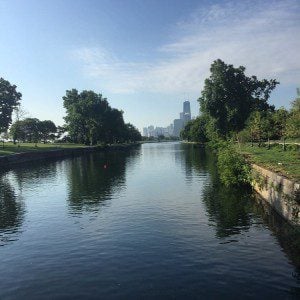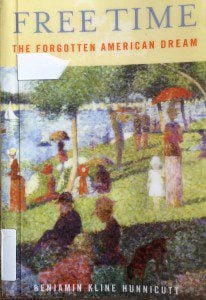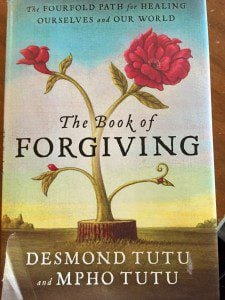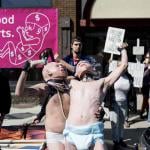Discernment was a major emphasis of my spiritual direction training at San Francisco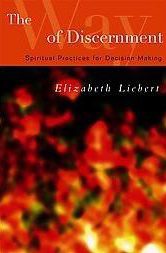 Theological Seminary. The following is adapted from my coursework, and is based on a congregational discernment process that I have used in the past and continue to refine.
Theological Seminary. The following is adapted from my coursework, and is based on a congregational discernment process that I have used in the past and continue to refine.
Ground Rules (adapted from Solomon’s Porch in Minneapolis, MN)
- You don’t get to complain about what you’re not willing to help fix.
- Every vision/passion has to have someone’s name on it.
Week One
- What aspects of this congregation are you most grateful for?
- What is already right, good, beautiful, and exciting about our congregational life together?
- What good news do we have to share?
- What visual images do you associate with our congregation?
- How would you describe our congregation in 135 characters or less (by “characters,” I mean letters and spaces combined)? [Note: 135 character is related to the number of characters allowed in Facebook ads and is close to the 140 characters allowed by Twitter.]
Week Two
Part One
- Read through the italicized prompts below a few times slowly and prayerfully.
- Pause for approximately five minutes of contemplative silence (or more if you feel led) to reflect on these prompts.
- Write or draw in your journal about what emerged for you in response to these prompts:
“The task is not to get God to do something we think needs to be done, but to become aware of what God is doing so that we can respond to it and participate and take delight in it.” –Eugene Peterson
“We need to be about what God is doing in the world and putting what resources we have to work to support the moving of God’s spirit. We cannot do everything; however, there is plenty we can do beginning where we are.” —Anne Thomas Neil
- Ask God, “What is your dream for this congregation? How can we partner with what you are already doing in our neighborhood or region?”
Part Two
- Read the prompts above few more times slowly and prayerfully.
- Walk slowly and leisurely for at least twenty minutes, allowing yourself to free-associate in response to the above questions.
- Write or draw in your journal about what emerged during your stroll — either upon your return or find a convenient place to sit outside to journal.
Week 3
“Church Growth is a Contact Sport”: Allow yourself to mentally think through all the people you know through all the organizations in which you are involved as well as all the individuals you come into contact with for various reasons through your day, week, month, or year.
- If we are to recruit new members, we must step out of our comfort zone to invite those who may find our congregation to be good news and invite them personally to visit.
- A referral generates 80% more results than cold calls.
- Approximately 70% of all jobs are found through networking.
- Most people you meet have at least 250 contacts.
- Anyone you might want to meet or contact is only four to five people away from you.
(Power Networking by Donna Fisher and Sandy Vilas)
A Prayer for Discernment
(Written by the leadership of the SFTS Spiritual Direction Program)
Creating God:
You stretch wide the galaxies, and open the human heart to receive more and more of your love. Your Spirit has enlarged our spirits by drawing us together into this church of worship and singing, prayer and listening, hospitality and learning, compassion and justice — and we are grateful.
During this time of transition, keep stretching us by your grace, so that we may see, hear, and embrace the new things you are doing.
Free us to be who you want us to be, so that we may love and serve one another, our families and communities, this church and the world, the universe and creation itself, and You who are within and beyond everything.
We lean on your wisdom and grace, embodied so abundantly in Jesus of Nazareth. In Christ, with Christ, and through Christ we pray. Amen.
While Walking a Labyrinth
Be open with your whole self to how God is speaking to you about God’s dreams for the future of the congregation.
What images, feelings, or thoughts emerge naturally and organically as you walk prayerfully?
Draw or journal your experience in response.
For Further Study
Elizabeth Liebert, The Way of Discernment: Spiritual Practices for Decision Making (Westminster John Knox Press 2008): “How can Christians invite God into their decision making? Liebert, who teaches spirituality at San Francisco Theological Seminary, says that discernment is about aligning human will with God’s. Unlike ordinary decision making, it requires prayer and the accountability of a faith community to help us know which way to go. Drawing on Christian thinkers through the ages, from Ignatius of Loyola and Jonathan Edwards to Frederick Buechner and Thomas Merton, Liebert teaches that discernment is both a spiritual gift and an acquired habit that can be honed through regular practice. To that end, she provides extensive exercises to help readers identify and work through discernment issues in their own lives. Readers should plan to take time with this book, because the exercises yield their richest rewards through careful and slow implementation. While the author cautions that absolute certainty is rarely possible, a diligent practice of discernment can lead to confirmation. Liebert’s wise spiritual counsel will aid many seekers as they determine their next step.”
Debra K. Farrington, Hearing with the Heart: A Gentle Guide to Discerning God’s Will for Your Life (Jossey-Bass 2002): “Farrington’s touch is indeed gentle as she guides readers through the steps of discernment. Rather than relying on cautionary tales of the bad things that will happen if people fail to discern God’s will, Farrington emphasizes God’s love throughout the book. She makes the case that God’s will for humanity matches perfectly with the heart’s deepest desires and enables people to do the most good for those around them. Her emphasis on the positive is enhanced by her balanced use of scripture, personal anecdotes, and stories from the lives of Christians throughout history, such as the Desert Fathers and the Society of Friends (Quakers). Perhaps most impressive is Farrington’s ability to use scripture and Christian orthodoxy as the primary basis of her insights (she is an Episcopalian), but at the same time honor less orthodox and even non-Christian traditions. They include the Quaker practice of settling into silence and waiting on God as well as Lectio Divina, a method for meditating on scripture. Farrington’s final section invites readers to go through the process of discernment, but one need not be at a crossroads to appreciate this book.”
The Rev. Dr. Carl Gregg is a trained spiritual director, a D.Min. graduate of San Francisco Theological Seminary, and the pastor of Broadview Church in Chesapeake Beach, Maryland. On July 9, 2012, he will start as the Minister of the Unitarian Universalist Congregation of Frederick, Maryland. Follow him on Facebook (facebook.com/carlgregg) and Twitter (@carlgregg).



